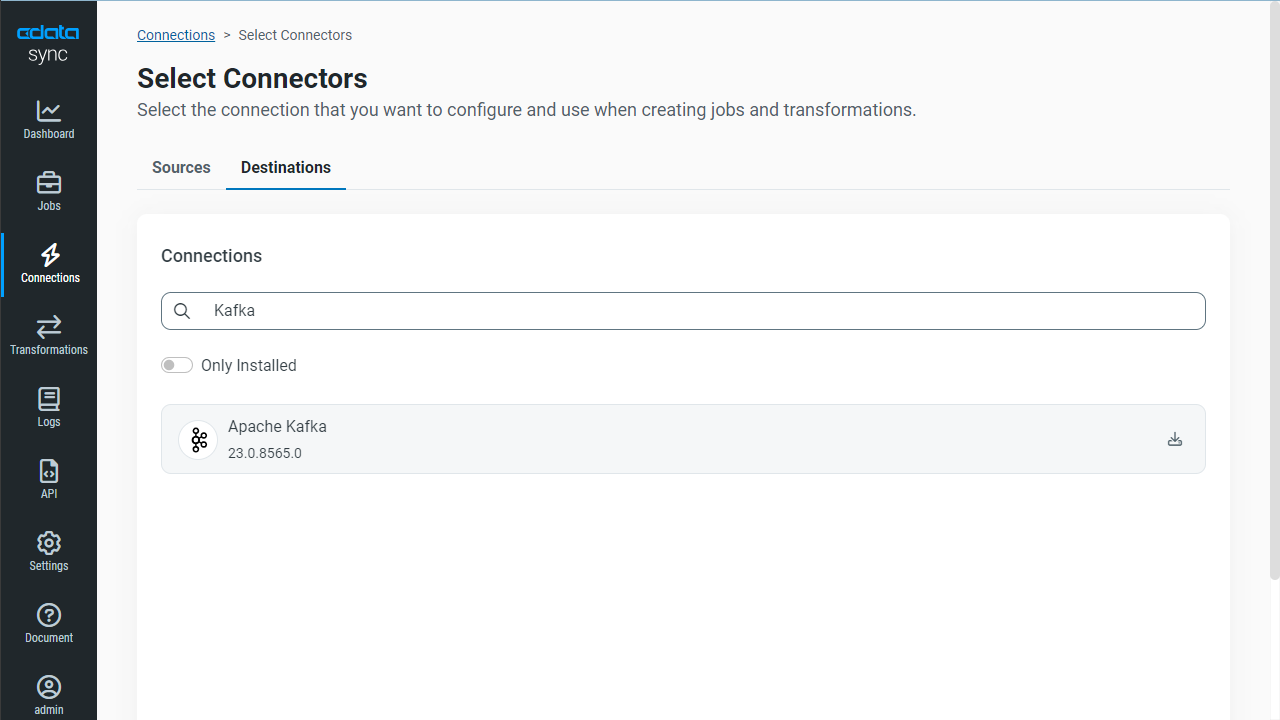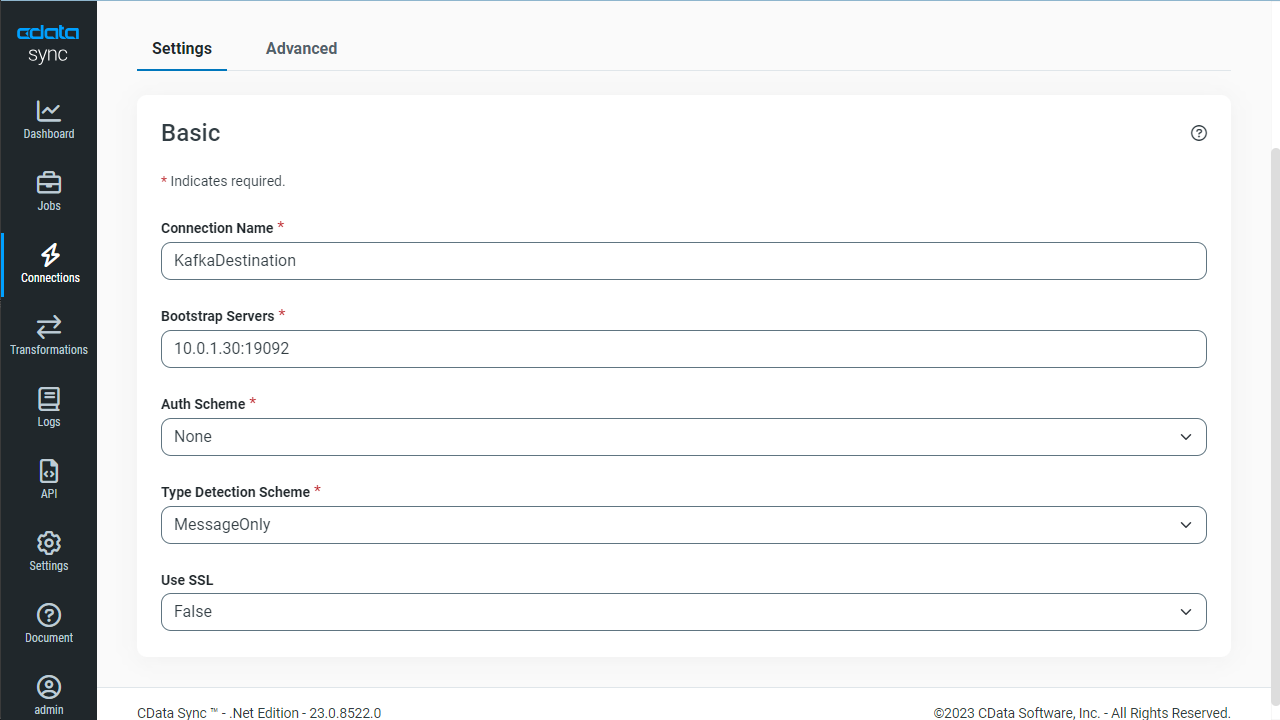Discover how a bimodal integration strategy can address the major data management challenges facing your organization today.
Get the Report →Automated Continuous Harvest Replication to Apache Kafka
Use CData Sync for automated, continuous, customizable Harvest replication to Apache Kafka.
Always-on applications rely on automatic failover capabilities and real-time data access. CData Sync integrates live Harvest data into your Apache Kafka instance, allowing you to consolidate all of your data into a single location for archiving, reporting, analytics, machine learning, artificial intelligence and more.
Configure Apache Kafka as a Replication Destination
Using CData Sync, you can replicate Harvest data to Kafka. To add a replication destination, navigate to the Connections tab.
- Click Add Connection.
- Select Apache Kafka as a destination.
![Configure a Destination connection to Kafka.]()
- Enter the necessary connection properties:
- Bootstrap Servers - Enter the address of the Apache Kafka Bootstrap servers to which you want to connect.
- Auth Scheme - Select the authentication scheme. Plain is the default setting. For this setting, specify your login credentials:
- User - Enter the username that you use to authenticate to Apache Kafka.
- Password - Enter the password that you use to authenticate to Apache Kafka.
- Type Detection Scheme - Specify the detection-scheme type (None, RowScan, SchemaRegistry, or MessageOnly) that you want to use. The default type is None.
- Use SSL - Specify whether you want to use the Secure Sockets Layer (SSL) protocol. The default value is False.
- Click Test Connection to ensure that the connection is configured properly.
![Configure a Destination connection.]()
- Click Save Changes.
Configure the Harvest Connection
You can configure a connection to Harvest from the Connections tab. To add a connection to your Harvest account, navigate to the Connections tab.
- Click Add Connection.
- Select a source (Harvest).
- Configure the connection properties.
Start by setting the Profile connection property to the location of the Harvest Profile on disk (e.g. C:\profiles\Harvest.apip). Next, set the ProfileSettings connection property to the connection string for Harvest (see below).
Harvest API Profile Settings
To authenticate to Harvest, you can use either Token authentication or the OAuth standard. Use Basic authentication to connect to your own data. Use OAuth to allow other users to connect to their data.
Using Token Authentication
To use Token Authentication, set the APIKey to your Harvest Personal Access Token in the ProfileSettings connection property. In addition to APIKey, set your AccountId in ProfileSettings to connect.
Using OAuth Authentication
First, register an OAuth2 application with Harvest. The application can be created from the "Developers" section of Harvest ID.
After setting the following connection properties, you are ready to connect:
- ProfileSettings: Set your AccountId in ProfileSettings.
- AuthScheme: Set this to OAuth.
- OAuthClientId: Set this to the client ID that you specified in your app settings.
- OAuthClientSecret: Set this to the client secret that you specified in your app settings.
- CallbackURL: Set this to the Redirect URI that you specified in your app settings.
- InitiateOAuth: Set this to GETANDREFRESH. You can use InitiateOAuth to manage how the driver obtains and refreshes the OAuthAccessToken.
![Configure a Source connection (Salesforce is shown).]()
- Click Connect to ensure that the connection is configured properly.
- Click Save Changes.
Configure Replication Queries
CData Sync enables you to control replication with a point-and-click interface and with SQL queries. For each replication you wish to configure, navigate to the Jobs tab and click Add Job. Select the Source and Destination for your replication.

Replicate Entire Tables
To replicate an entire table, click Add Tables in the Tables section, choose the table(s) you wish to replicate, and click Add Selected Tables.

Customize Your Replication
You can use the Columns and Query tabs of a task to customize your replication. The Columns tab allows you to specify which columns to replicate, rename the columns at the destination, and even perform operations on the source data before replicating. The Query tab allows you to add filters, grouping, and sorting to the replication.
Schedule Your Replication
In the Schedule section, you can schedule a job to run automatically, configuring the job to run after specified intervals ranging from once every 10 minutes to once every month.

Once you have configured the replication job, click Save Changes. You can configure any number of jobs to manage the replication of your Harvest data to Kafka.










